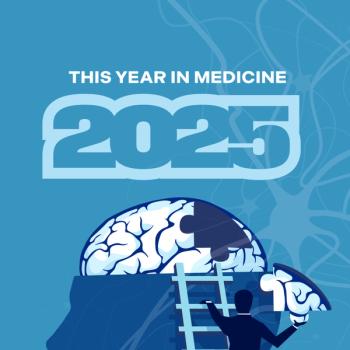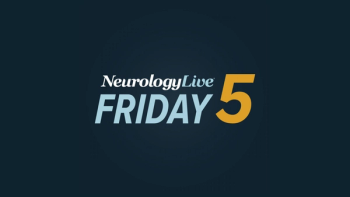
New Guidelines Aim to Redefine Penetrating Brain Injury Care

Gregory Hawryluk, MD, PhD, a neurosurgeon at Cleveland Clinic, spoke on the development and clinical impact of new global guidelines for penetrating traumatic brain injury.
At this year’s Congress of Neurological Surgeons Annual Meeting, newly released global guidelines for the treatment of penetrating traumatic brain injury (pTBI) marked a pivotal moment in the field of neurotrauma. Spearheaded by Gregory Hawryluk, MD, PhD, spine neurosurgeon at Cleveland Clinic and medical director of the Brain Trauma Foundation, the project represents years of coordinated international effort to modernize and standardize care for one of the most complex and life-threatening injury types. The guidelines, developed through collaboration between civilian and military experts, were shaped by a growing need to translate evidence-based strategies into actionable tools for trauma teams worldwide.
Created through a rigorous, data-driven process supported by the U.S. Military Research and Development Command, these recommendations reflect both the latest science and the real-world experience of neurosurgeons managing catastrophic brain injuries in a variety of care settings. Already recognized as a critical resource for hospitals and combat care units, the guidelines are expected to redefine the global standard for managing pTBI, improve survival, and strengthen preparedness for future mass-casualty and conflict-related injuries.
NeurologyLive: For clinical neurosurgeons and trauma teams who treat pTBI, what are the most notable takeaways and pieces from these guidelines that should be stressed?
Gregory Hawyruk, MD, PhD: We think that above all else, the most important takeaway is the revelation that patients with a penetrating brain injury who survive to reach the hospital have outcomes as good or better than equivalent patients with blunt traumatic brain injury. Many physicians and surgeons still equate a pTBI with a non-survivable injury and this is simply not the case. Many lives will be saved if nihilism can be avoided and these patients are treated aggressively.
Other takeaways include:
- Evidence supporting the cerebrovascular injury as the quintessential characteristic of pTBI. Our guidelines demonstrate the importance of cerebral angiography in these patients as well as the need to aggressively screen for and treat these cerebrovascular injuries such as traumatic pseudoaneuryms. We've also learned that contrary to conventional thought, these aneurysms can be coiled and in fact this is a preferred treatment as it avoids sacrifice of the parent artery and an ensuing stroke. Coiled pseudoaneurysms frequently require re-treatment, however.
- A Level 2 recommendation - amongst the strongest we have in head injury - recommends that neurosurgeons work aggressively to prevent cerebrospinal fluid leaks at surgery. Unlike in blunt head injury, CSF fistulae associated with pTBI are generally gaping and unlikely to resolve on their own. Synthetic materials should be used for this purpose if suitable autologous materials are not available.
- Though a number of prediction models have been developed which predict outcome after pTBI, we discourage their use to make care-limiting decisions
- We have refined recommendations related to antibiotic and seizure prophylaxis
- This was the first-ever BTF guideline which incorporated the rigorous inclusion of expert opinion (via a Delphi consensus process) which aimed to bridge published evidence with the realities of care at the bedside. In other words, it was designed to be more helpful than past guidelines, which only presented a summation of the evidence. This was further assisted by the generation of a comprehensive set of treatment algorithms.
What went into these updated guidelines?
This was a massive five-year project. Once the vision for the project was established, we had to get it funded. Fortunately, our grant application received a very rare perfect score from the Military Research and Development Command (and they subsequently called it the most important project they have ever funded). This provided the funds to assemble a working group of over 30 of the world’s top experts, over half of whom had military backgrounds. Our work followed a regimented process designed to produce the high quality guidelines for which BTF is known. Many measures were in place to reduce bias, including the use of independent methodologists without subject-matter expertise.
We identified 6078 references but scrutiny whittled these down to 135 meeting criteria to provide evidence for our systematic reviews.
Ultimately, this large project required the hard work of our highly expert panel for five years.
Were there any aspects of developing these guidelines that were a challenge?
Every aspect of this project was hard - nothing comes easy with a large guideline project like this. Ultimately the hardest part, I think was the decision-making around resolving a standoff we had with the American Association of Neurological Surgeons/Congress of Neurological Surgeons Joint Guidelines Committee who reviewed our work. We created an evidence-informed consensus recommendation that pTBIs receive surgical treatment within 5 hours when possible. The AANS/CNS refused to endorse our work unless we retracted this time limit as they felt it would be used as a basis for lawsuits against neurosurgeons. We reluctantly agreed to remove the "5h" and instead say "urgent" in exchange for formal endorsement of our work by the AANS/CNS.
Going forward, how do we properly integrate these guidelines/recommendations into clinical care?
Patients with pTBI present a unique combination of high complexity and high emergency. We have tried to make the salient aspects of our work easy to digest and navigate with tools like a set of two algorithm posters. In addition, we have provided an online course accompanying this work which aims to educate providers on the content of the guidelines efficiently so they are armed when the next such a patient arrives in their trauma bay. Again, the most important point is avoiding nihilism and recognizing that, in virtually every instance, these patients will require neurosurgery on an urgent basis.
What downstream impacts do you think these guidelines will have on the patient and clinical communities?
Preliminary versions of our guidelines have been in use in Gaza and Ukrainian conflicts for the past few years and so our work already has an important legacy. Normally we wouldn't support such an early rollout, but we agreed to requests to share our work because a pragmatic approach is appropriate in a time of war and there has been an opportunity to help many injured soldiers. We have routinely articulated a desire that the need for our work will diminish because of a reduction in armed conflicts and violent crime. Nonetheless, we hope our work will afford pTBI patients the very best chance at a good outcome. We also hope that our work will inspire better quality research than we currently have to draw upon.
Unfortunately, we can count on one hand the number of prospective pTBI studies that sought to investigate a hypothesis - in our modern era, we must do better. The University of Chicago is positioned to build off of our findings as they are funded to study existing gaps in the literature through analysis of their uniquely large pTBI population.
Newsletter
Keep your finger on the pulse of neurology—subscribe to NeurologyLive for expert interviews, new data, and breakthrough treatment updates.




















